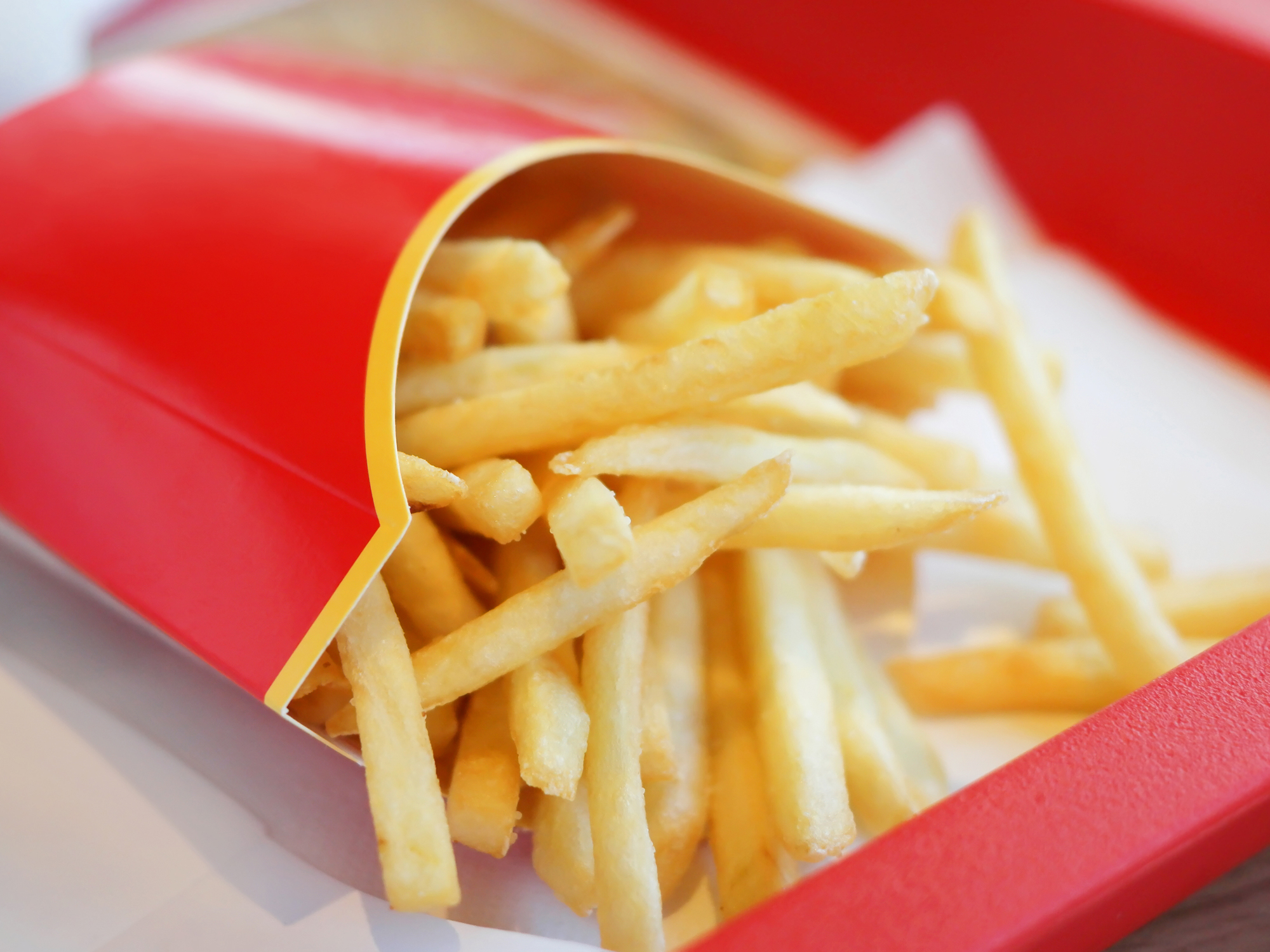Get Easy Health Digest™ in your inbox and don’t miss a thing when you subscribe today. Plus, get the free bonus report, Mother Nature’s Tips, Tricks and Remedies for Cholesterol, Blood Pressure & Blood Sugar as my way of saying welcome to the community!
Fast food packaging more dangerous than foods they hold

If you need one more reason to finally kick the fast food habit for good, it turns out it’s not just the food at fast food restaurants that can harm your health… it’s the packaging too.
You see, in effort to deal with the excessive amount of grease that drips from their food, fast food companies have started using grease-proof packaging…
Sounds like a good idea in theory, right?
Well, the problem is this packaging contains dangerous chemicals — perfluoroalkyl and polyfluoroalkyl substances (PFASs) — that have been tied to health problems like cancer, thyroid disease, immune suppression, low birth weight and decreased fertility, among other things.
And while these wrappers are wrapped tight around your favorite burger, or holding some tasty fries in a brightly colored box, those killer chemicals are leaching into every bite…
Pervasive PFASs pose a danger to your health
The truth is, even if you don’t eat fast food, you’re probably exposed to perfluoroalkyl and polyfluoroalkyl chemicals on a daily basis. That’s because they’re found in a bunch of everyday products like nonstick cookware, cosmetics, stain-resistant couches and carpeting, waterproof products, leather goods and outdoor apparel.
But just because they’re everywhere, doesn’t mean you should resign yourself to a life filled with PFASs…
Even if you can’t protect yourself from these chemicals completely, the more you can decrease your exposure to them the better. And you can start by cutting out those trips through the fast food drive-thru…
A peer-reviewed study published in the journal Environmental Science & Technology Letters found that half of paper wrappers and 20 percent of cardboard packaging from fast food restaurants contains PFAS compounds.
And researchers made another particularly alarming finding….
Some of these fast food containers contain perfluorooctanoic acid (PFOA), a type of PFAS that’s best known for poisoning people at the DuPont Washington Works facility in West Virginia. It’s also been labeled a possible carcinogen by the World Health Organization and has toxic effect on children’s immune systems…
In fact, the health risks associated with PFOA are so serious that even the FDA couldn’t ignore them. It called the health-stealing chemical out in a 2011 scientific review. The review prompted some U.S. food packaging companies to voluntarily stop using PFOA, but clearly it’s still a problem.
And I have more bad news….
As expected, the study found PFAS compounds in the packaging at fast food chains like McDonald’s, Burger King, Taco Bell, Chick-Fil-A and Dunkin’ Donuts. But it also found these chemicals in the food packaging of restaurants you wouldn’t necessarily expect like Jimmy John’s, Quiznos and Starbucks.
That means the places you consider safer options when you have a hankering for take-out may not be that safe after all.
Avoiding PFASs means avoiding take-out
The take home message is: It’s always better to cook fresh, healthy food at home than succumb to the temptation of ordering take-out. And if you really want to eat out, go to a real restaurant — one where you can sit down and eat your food on actual plates rather than out of a chemical-laden cardboard container.
Besides avoiding fast food, you may also want to avoid perfluoroalkyl and polyfluoroalkyl chemicals by:
- Steering clear of nonstick, waterproof and stain-resistant products…including furniture, carpeting, cookware and clothing.
- Choosing organic or natural cosmetics. For a list of safe cosmetics, check out the Environmental Working Group’s Skin Deep database.
- Investing in a good water filter. These chemicals are also in some tap water.
And since it’s impossible to avoid perfluoroalkyl and polyfluoroalkyl chemicals altogether, you should eat foods, herbs and spices that help your body get rid of these and other environmental toxins.
Sources:
-
“Fast food packaging contains potentially harmful chemicals that can leach into food.” MedicalXpress. https://medicalxpress.com. Retrieved February 2, 2017.
-
A. Schaider, et al. “Fluorinated Compounds in U.S. Fast Food Packaging.” Environmental Science and Technology Letter, 2017.
-
“Fast food with a side of fluorinated chemicals.” Environmental Health News. http://www.environmentalhealthnews.org. Retrieved February 2, 2017.
-
“Common consumer products contain high levels of perfluoroalkyl and polyfluoroalkyl substances.” European Commission. http://ec.europa.eu. Retrieved February 2, 2017.
-
“Reducing Human Exposure to Highly Fluorinated Chemicals to Protect Public Health.” American Public Health Association. http://www.apha.org. Retrieved February 2, 2017.












